A small, relaxing project for those stressed at work…..
So I needed something fun that I could make in order to try out the venerable tapered mortise and tenon joint. That, and a chance to practice some basic turning skills.
Forewarning: this is more of a pictorial post with captions rather than a full-on article of “how I did it”.

Design: I recently purchased and read (cover to cover) the Anarchist’s Design Book by Christopher Schwarz which puts forth the idea that basic, useable and pleasing furniture is within the grasp of most people willing to pick up a few tools. “To build, rather than buy.”
As a lifelong DIY’er, that principle really resonates. The furniture described in the book is simple, yet elegant, and built to last a lifetime (or four). One of the key joints used is the tapered mortise and tenon for table and chair legs, “staked furniture”. I really like the look of staked furniture and will be building some chairs/tables in the future based on this joint but wanted to give it a try on something simple first.
The “Staked High Stool” was not originally included in the book however, Chris published a supplement to the ADB that included both this stool, and a chair design inspired by the Welsh Stick Chair.
With some recycled barnwood left over from the table I just finished, and a piece of construction pine wide enough for the seat, the following is my first foray into staked furniture.
Prepping to cut the seat; no machining for just one piece. It’s amazing how precise you can joint an edge with a properly tuned No. 7 handplane and a sharp iron.
Using a planing sled I made from scraps, and the No. 5 jack plane, I rough out the octagon shape on the three legs and two stringers. A few passes with the No. 7 ensures all faces are straight and smooth. For me, planing these by hand is therapy and blood pressure management (and Pink Floyd doesn’t hurt either).
Once the octagon is shaped, I taper each of the three legs. Again, only the No. 5 and No. 7 are needed. I’ll taper the stringers after they are fitted and the ends turned on the lathe.
Using sightlines drawn on the bottom face of the seat, and my sliding bevel set for the resultant angle, I use an auger to drill the large pilot hole before reaming the conical mortise.
With the tapered reamer, I bore a test piece before I ream the actual seat.
To make a test tenon, I partially shape the end of a piece of scrap with a small drawknife and then use the big pencil sharpener. Just for fun, I turned the test piece round on the lathe.
After reaming, I set the jointer plane for a fine shaving and flatten and smooth the seat at the same time.
The straight tenons on the stringers are turned on the lathe, round mortises drilled in the legs, and everything test-fitted.
I mark a circle that is the diameter I want to taper to on the ends of the stringers and use that as a guide while planing. When I’m close to the line, I switch from jack to jointer plane for the last few passes. I only used the smoothing plane once on this project.
When all the pieces are ready for glue-up, I make some wedges out of scrap hardwood (ash, in this case). A kerf is cut into each tenon to accept the wedges.
I’m using “bone glue” on this stool because I need the extra working time and because it not only is reversible if I make a mistake, but the cleanup is dead easy with a wet toothbrush (not my wife’s).
After the glue dries overnight, I use a flush cut saw to remove the excess tenons and a block plane to shave the area smooth. The wedges are always inserted 90 degrees to the grain of the leg/stretcher so as not to cause splitting. And it looks cool too.
To cut the feet flush with the floor, the stool is first put on a level surface and a shim under the high foot in order to level the seat.
A pencil taped to a flat shim is used to mark the cut line on all three feet and then I carefully cut to the line.
The result is three feet that now sit flush. A small chamfer planed on the bottom edge will prevent splintering when the stool is slid across the floor.
A couple coats of oil and Bob’s your uncle :-).
Good fun, and the stress meter is off-scale-low. Chris Schwarz wrote something in the ADB like “With tools, you can escape that job that’s slowly killing you.” Food for thought, but probably unrealistic for me at this point. Sigh.


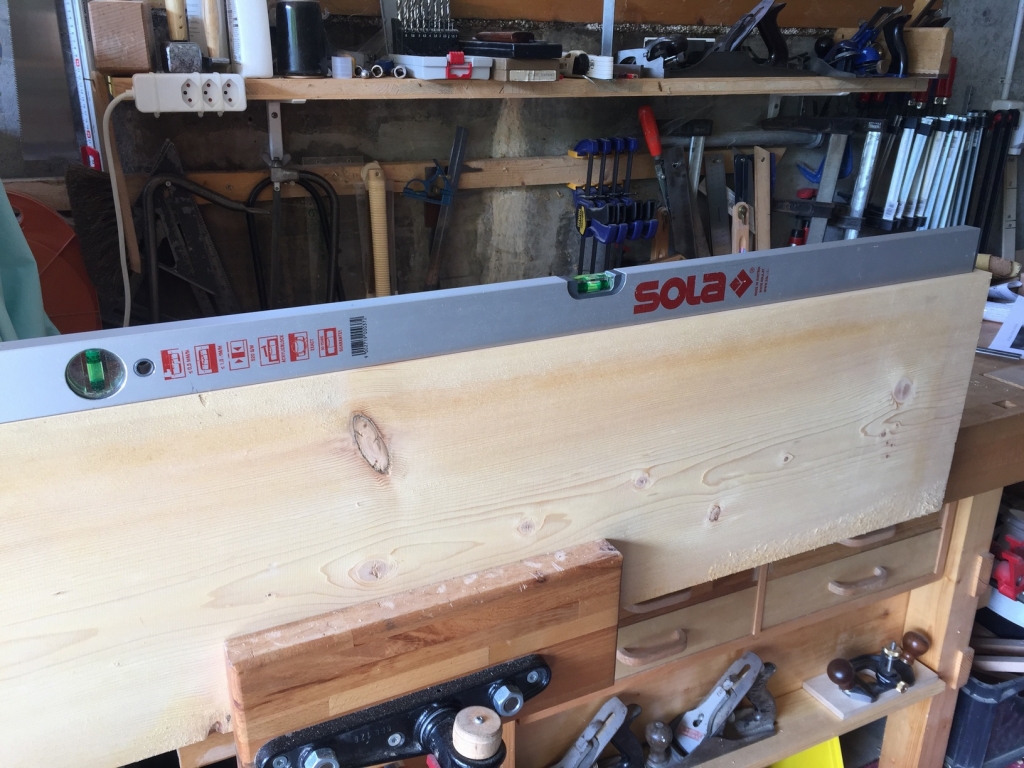

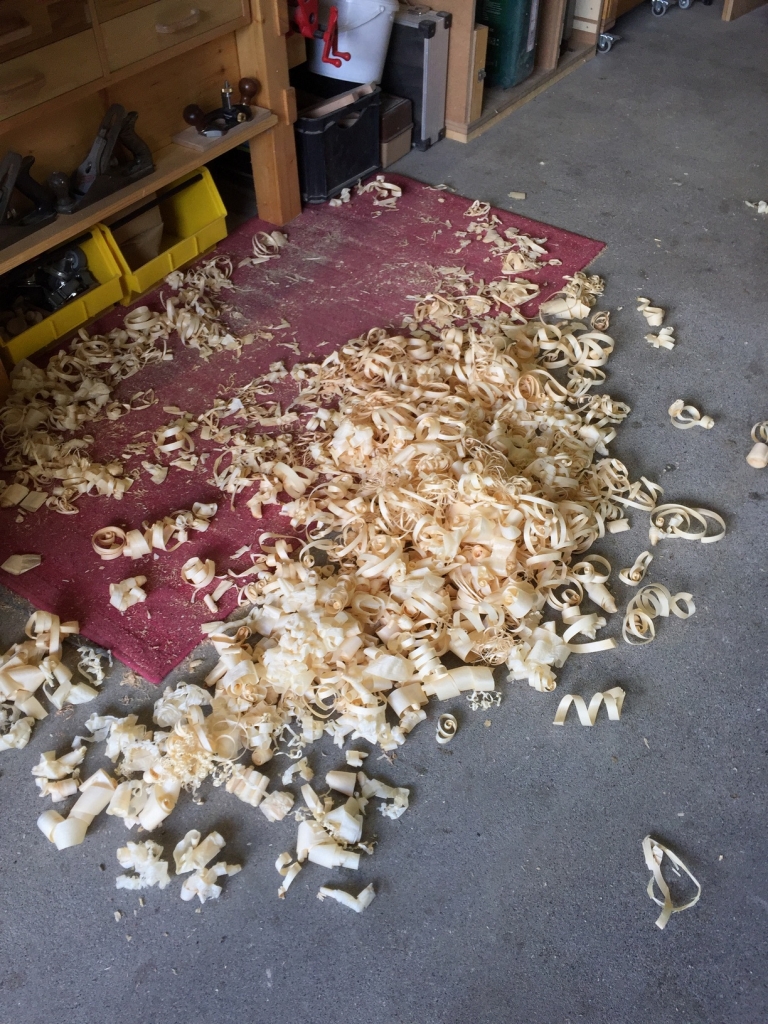


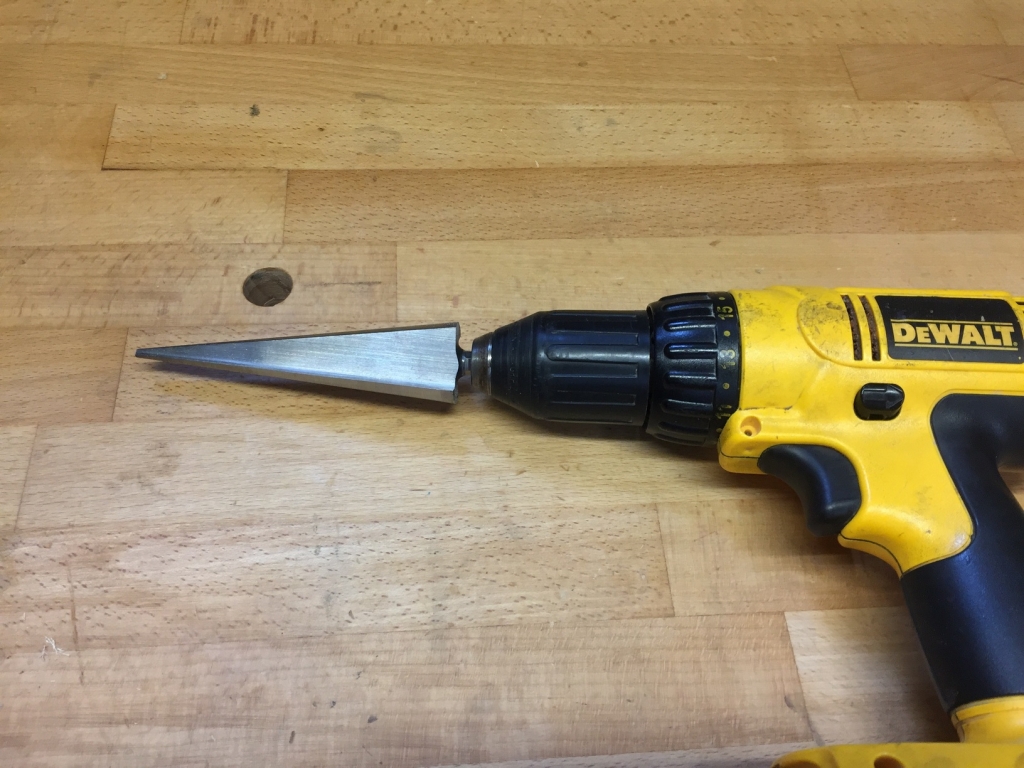
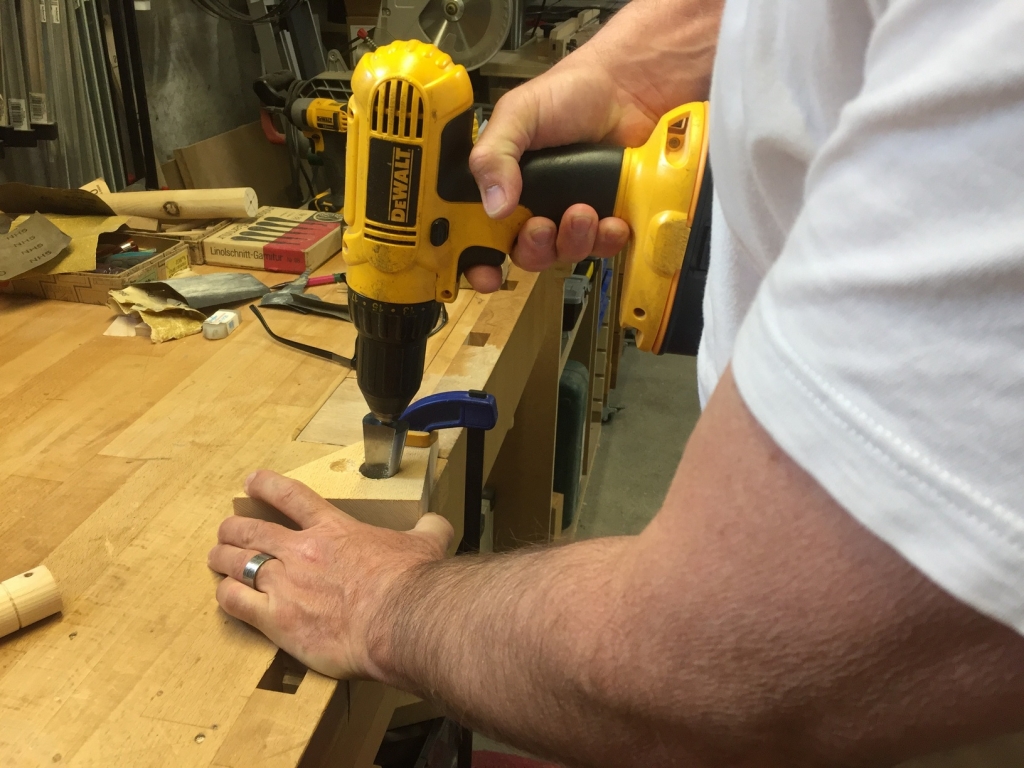
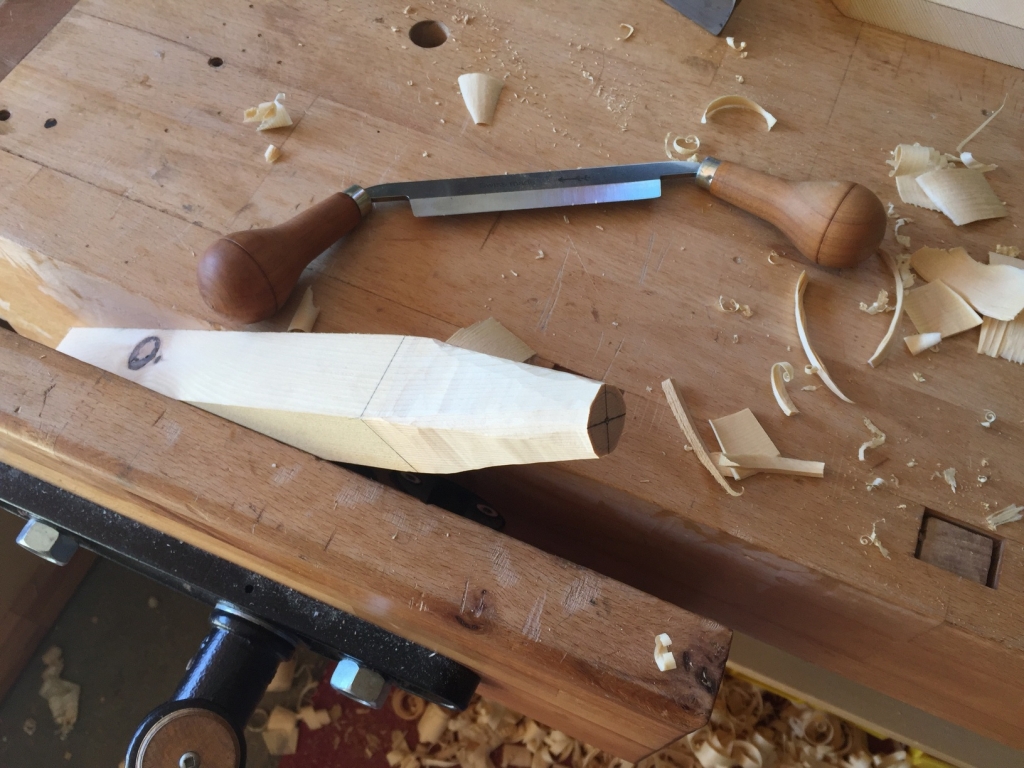




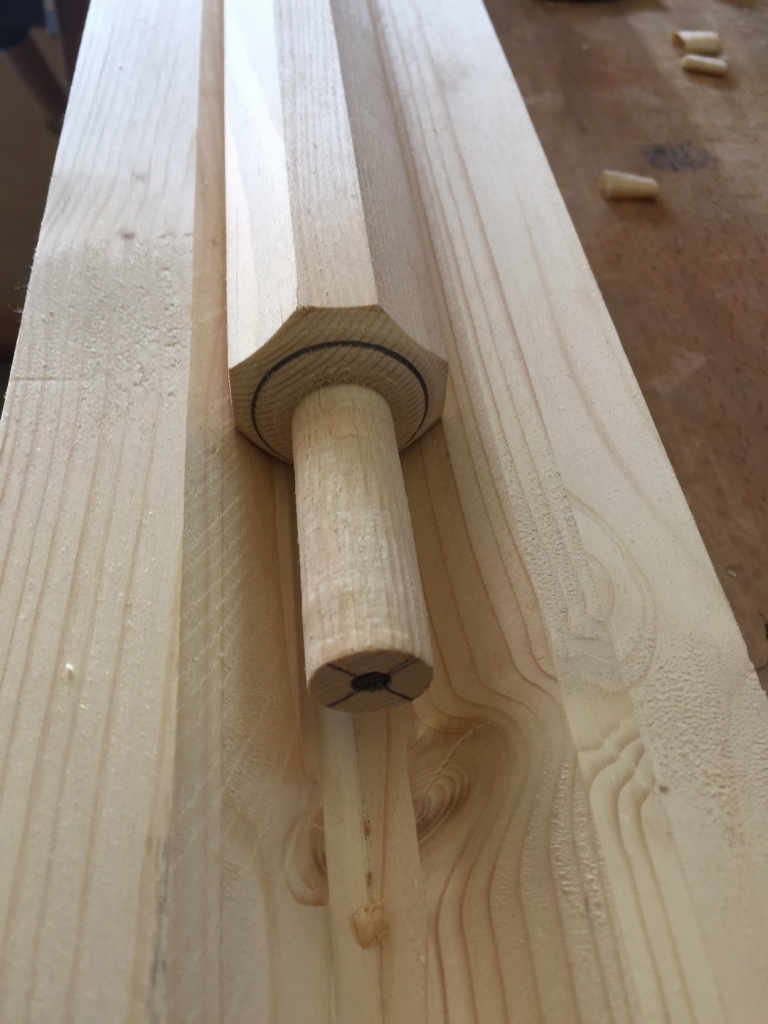
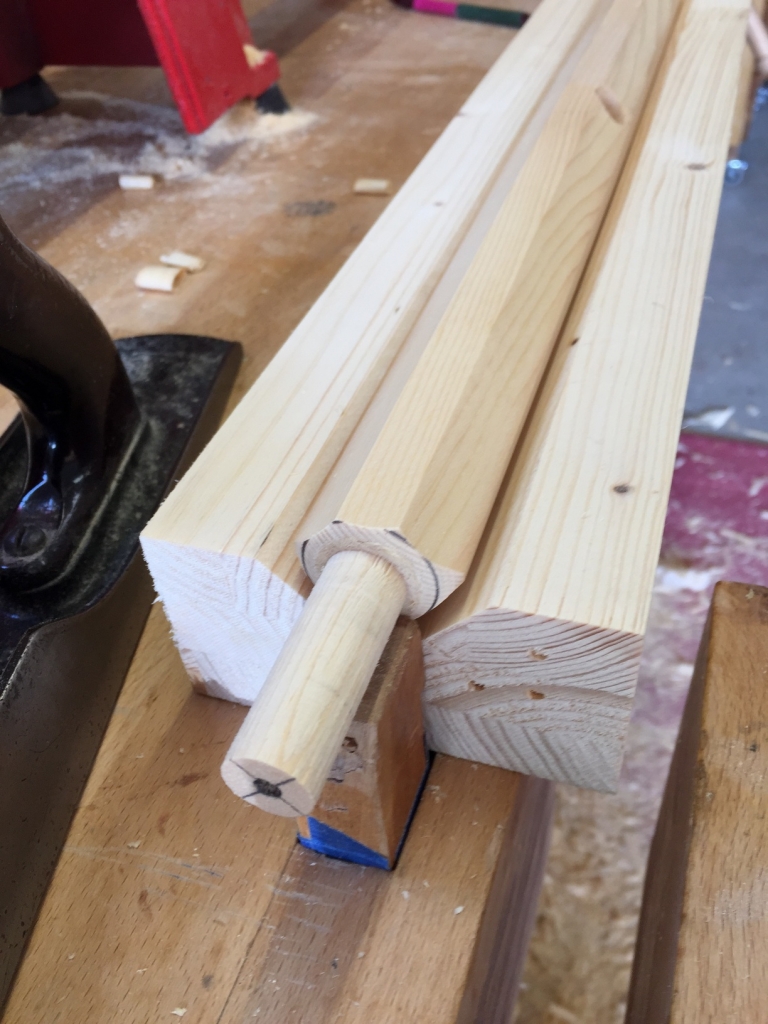








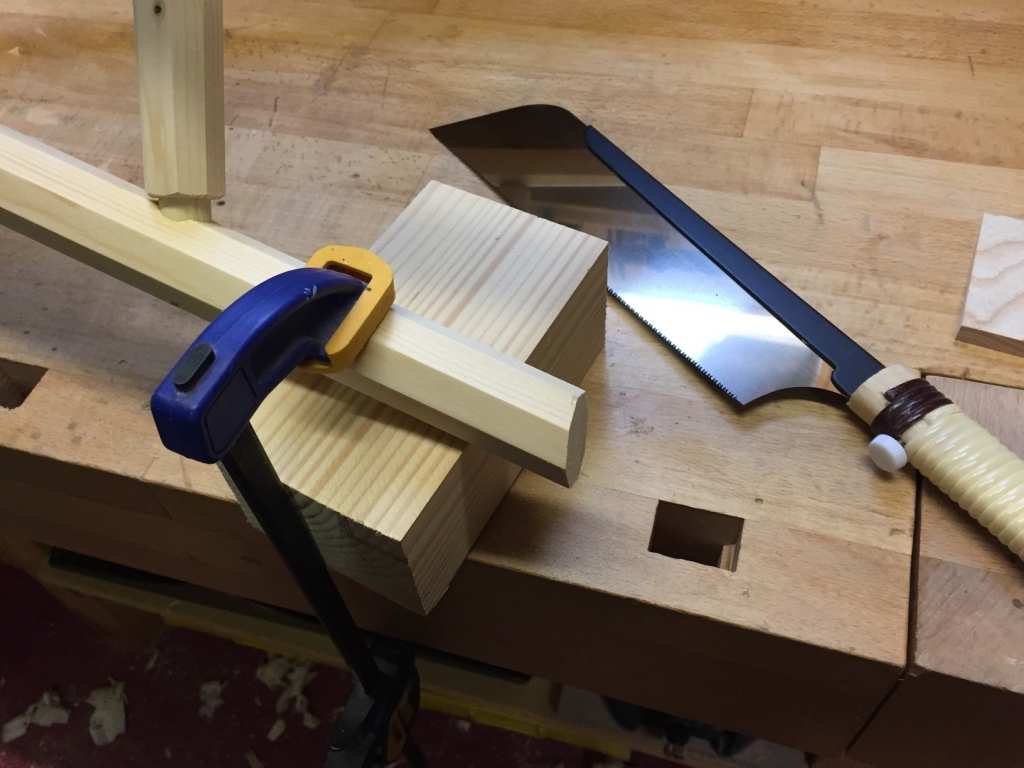



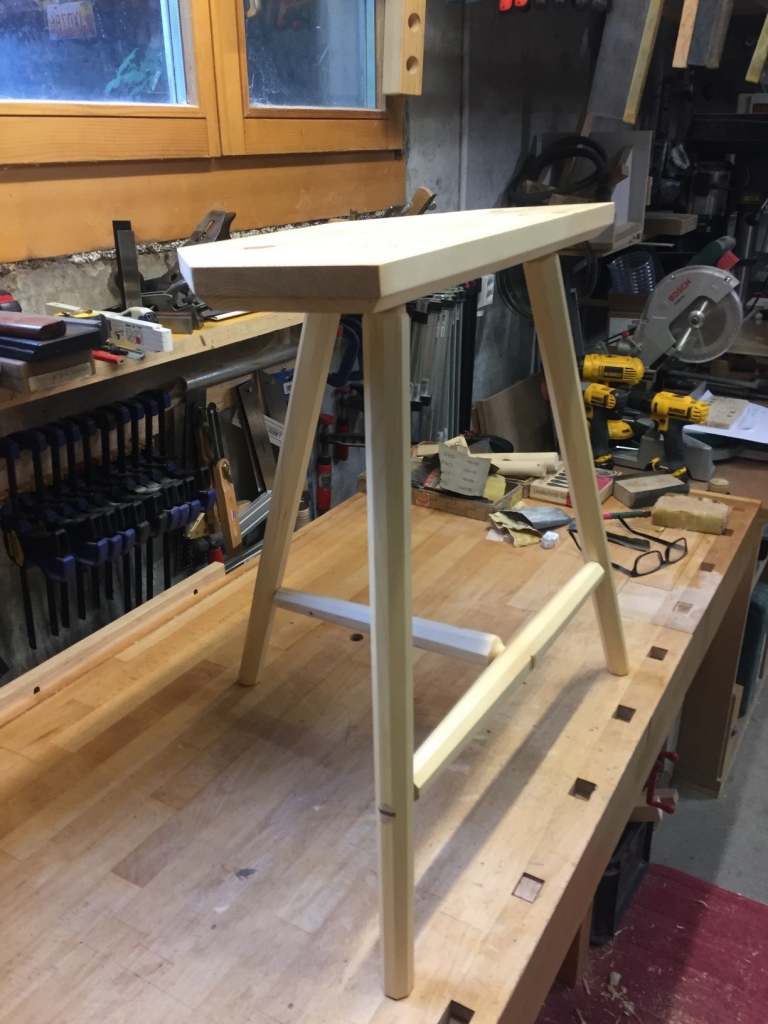



Leave a Reply